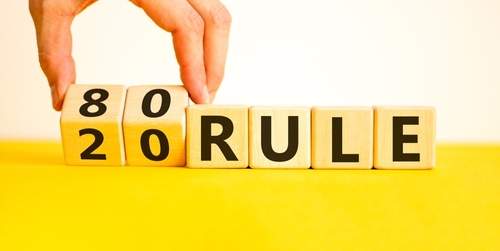Welcome to the captivating world of blackjack, where skill, strategy, and a touch of luck converge to create an exhilarating casino experience. Whether you’re a seasoned player or new to the game, mastering the art of blackjack can significantly enhance your chances of success at the tables. In this article, we will delve into the essential tips and strategies that can elevate your blackjack game to new heights. Get ready to sharpen your skills, make informed decisions, and maximize your winnings in this classic card game.
The Basics Art of Blackjack

Understanding the objective: Beat the dealer’s hand without exceeding 21.
Familiarizing with the card values: Ace, numbered cards, and face cards.
Knowing the different blackjack actions: Hit, stand, double down, and split.
Numbered Cards (2-10): The numbered cards in the deck (2 to 10) hold their face value. For example, a 2 of hearts is worth 2 points, a 7 of spades is worth 7 points, and so on.
Face Cards (Jack, Queen, King): Face cards, which include the Jack, Queen, and King, are each worth 10 points. Regardless of their suit, all face cards hold the same value in blackjack.
Ace: The Ace is a special card in blackjack and can be worth either 1 or 11 points, depending on the player’s preference and the situation. It offers flexibility and can contribute to the player’s hand in multiple ways. For example, if a player has an Ace and a 6, they can count the Ace as 11 and have a hand totaling 17. Alternatively, if the player has an Ace, a 6, and a 9, they can count the Ace as 1 to avoid busting, resulting in a hand totaling 16.
The primary actions in blackjack include the following:
Hit: When a player chooses to “hit,” it means they want to receive an additional card from the dealer.
Stand: When a player decides to “stand,” it means they are satisfied with their current hand and do not want any more cards.
Double Down: Doubling down allows players to double their initial bet in exchange for receiving one more card. After receiving the additional card, players must stand. This action is typically chosen when a player has a strong hand and believes that one more card will significantly improve their chances of winning.
Split: If a player’s initial two cards are of the same rank (e.g., two 7s or two Queens), they have the option to “split” the hand into two separate hands. This requires placing an additional bet equal to the original wager. The player then plays each hand individually, with the dealer dealing one more card to each split hand. Splitting is advantageous when the player believes that two separate hands have a higher probability of winning compared to playing the initial hand as a whole.
Insurance: When the dealer’s upcard is an Ace, players have the option to take “insurance” against the dealer having a blackjack. Insurance is a separate side bet equal to half the original wager. If the dealer does have a blackjack, the insurance bet pays out at 2:1, mitigating the loss on the original wager. However, taking insurance is generally considered a less favorable move mathematically and is often not recommended.
Surrender: In some blackjack variants, players have the option to “surrender” their hand and forfeit half of their original bet. This action is available early in the hand, before the player takes any additional actions. Surrendering can be advantageous when the player believes their chances of winning are low and wants to limit their losses.
The choice of action depends on the player’s hand total, the dealer’s upcard, and the specific blackjack rules being followed. By employing a basic blackjack strategy, players can make the most statistically favorable decisions to maximize their chances of winning in the long run.
The Importance of Basic Strategy

Introducing the concept of basic strategy: A fundamental approach based on statistical probabilities.
Exploring the basic strategy chart: A handy reference tool for optimal decision-making.
Emphasizing the benefits of using basic strategy: Reducing the house edge and increasing player advantage.
Basic strategy is of paramount importance in blackjack as it provides players with the optimal decisions to make based on statistical probabilities and the specific circumstances of the game. Here are several reasons why basic strategy is crucial in blackjack:
Reducing the House Edge: Blackjack is one of the few casino games where players can have an edge over the house if they employ optimal strategies. The basic strategy minimizes the house edge, which is the statistical advantage that the casino holds over players. By making the correct decisions consistently, players can significantly improve their chances of winning and decrease long-term losses.
Maximizing Player Advantage: The basic strategy helps players make informed choices that maximize their advantage in favorable situations. For instance, when the dealer’s upcard is weak (2 to 6), the basic strategy advises players to stand more often as the dealer has a higher probability of busting. Similarly, it suggests doubling down on strong player hands to extract maximum value when the dealer is at a disadvantage. Following these strategies allows players to capitalize on advantageous conditions and increase their overall profitability.
- Card Counting Techniques
Demystifying card counting: A strategy to track the ratio of high and low cards remaining in the shoe.
Exploring different card counting systems: Hi-Lo, KO, and more.
Highlighting the advantages and limitations of card counting.
At its core, card counting is a method of assigning point values to cards to estimate the composition of the remaining deck or shoe. By tracking the ratio of high (10s and Aces) to low (2s to 6s) cards, players can make more informed decisions on bet sizing and playing strategy.
The Hi-Lo and KO card counting systems are popular methods used by blackjack players to track the ratio of high and low cards remaining in the shoe. Both systems assign point values to different cards and require players to keep a running count as cards are dealt. Let’s take a closer look at each system:
Hi-Lo Card Counting System:
The Hi-Lo system is one of the most widely known and used card counting methods. It assigns the following point values to the cards:
Cards 2 to 6: +1
Cards 7 to 9: 0
Cards 10 to Ace: -1
As the cards are dealt, players add or subtract the assigned values to keep a running count. A positive count indicates that there is a higher proportion of high cards left in the shoe, while a negative count suggests the opposite.
To calculate the true count, players divide the running count by the estimated number of decks remaining in the shoe. The true count helps players adjust their betting and playing strategies in proportion to the advantage or disadvantage indicated by the count.
The Hi-Lo system is relatively straightforward and suitable for beginners. It provides a reliable estimation of the advantage based on the remaining cards in play.
KO (Knock-Out) Card Counting System:
The KO card counting system is another popular method that simplifies the Hi-Lo system by eliminating the need for true count calculations. It assigns the following point values to the cards:
Cards 2 to 7: +1
Cards 8 and 9: 0
Cards 10 to Ace: -1
Similar to the Hi-Lo system, players keep a running count by adding or subtracting the assigned values as cards are dealt. However, instead of converting the running count into a true count, players use the running count as a direct indicator of the advantage.
The KO system’s simplicity and efficiency make it appealing to players who prefer a straightforward counting method without the additional step of calculating the true count.
It’s important to note that both the Hi-Lo and KO systems require players to practice and develop their skills to accurately maintain the running count while making strategic decisions at the table. Additionally, players must be mindful of casino detection and take precautions to avoid drawing unwanted attention, as casinos may have countermeasures in place to identify card counters.
Remember, card counting systems are not foolproof, and success is not guaranteed. They provide players with a mathematical advantage, but other factors such as variance, bankroll management, and playing strategy also play important roles in long-term profitability in blackjack.
Card counting techniques in blackjack can provide players with an edge over the casino by keeping track of the ratio of high and low cards remaining in the shoe. While card counting can be a powerful strategy, it also has its advantages and disadvantages.
Advantages of Card Counting:
Increased Player Advantage: Card counting allows players to gain an edge over the house by adjusting their bets and strategies based on the composition of the remaining cards. When the shoe contains a higher proportion of high-value cards (10s and Aces), players have a greater chance of being dealt strong hands like blackjack, while the dealer is more likely to bust. This knowledge empowers players to increase their bets during favorable situations, thereby maximizing their potential winnings.
Improved Decision-Making: Card counting provides players with valuable information to make more informed decisions during the game. By tracking the ratio of high and low cards, players can adjust their playing strategy accordingly.
Overcoming House Edge: Utilizing effective card counting techniques can help players reduce the house edge significantly. While the house always has an inherent statistical advantage in blackjack, proficient card counters can tip the scales in their favor.
Disadvantages of Card Counting:
Complexity and Skill Requirement: Card counting is not a simple strategy and requires a significant level of skill, concentration, and practice to execute accurately. It involves mental calculations, quick decision-making, and the ability to perform under pressure.
Detection by Casinos: Casinos are vigilant about detecting and discouraging card counters, as they view it as an attempt to gain an unfair advantage. They employ various measures to identify and restrict card counters, including trained personnel, surveillance systems, and rule variations designed to counteract card counting strategies. If detected, players may face negative consequences such as being asked to leave the casino or being barred from playing blackjack altogether.
Legal and Ethical Considerations: Card counting is not illegal, but casinos consider it undesirable behavior. Some jurisdictions may have specific regulations regarding card counting, so it’s essential to understand the legalities in your area.
In summary, card counting techniques can provide players with an advantage in blackjack by enabling them to make more informed decisions and adjust their bets based on the composition of the cards. However, card counting requires skill, concentration, and practice, and its effectiveness can be hindered by the complexity of the strategy, detection by casinos, variance, and ethical considerations. Players considering card counting should weigh these factors and understand the potential risks and rewards associated with this advanced blackjack strategy.
Understanding Variations and Rule Effects

Discussing common blackjack rule variations: Double exposure, surrender, and more.
Analyzing the impact of rule variations on strategy and odds.
Adapting to different game conditions to maximize profitability.
In the world of blackjack, various rule variations can greatly impact the game’s strategy and odds. Understanding these rule variations and their implications is crucial for players looking to maximize their profitability. In this article, we will explore two common rule variations in blackjack: Double Exposure and Surrender. We will analyze their impact on strategy and odds, and discuss how players can adapt to different game conditions to enhance their chances of success.
Double Exposure:
Double Exposure, also known as Dealer Disclosure or Face Up 21, is a rule variation where both of the dealer’s cards are exposed to players at the start of the hand. This rule seemingly gives players an advantage by providing full knowledge of the dealer’s hand. However, to offset this advantage, the game introduces certain rule adjustments that favor the house. Let’s examine the impact of Double Exposure on strategy and odds:
Impact on Strategy:
With both dealer cards exposed, the basic blackjack strategy undergoes some modifications. For example:
Players should hit less often on hard totals, as the dealer’s potential for busting is reduced.
Soft hands gain more value, as players can confidently determine the best action based on the dealer’s visible cards.
Splitting pairs becomes less advantageous since players know the dealer’s hand in advance, and splitting may not be as profitable.
Impact on Odds:
The rule adjustments in Double Exposure impact the odds in favor of the house. The most significant adjustment is the reduction in blackjack payouts from the usual 3:2 to 1:1. Additionally, ties often result in a player loss, rather than a push. These modifications increase the house edge and decrease the player’s expected return.
Adapting to Double Exposure:
To adapt to the Double Exposure rule, players need to:
- Adjust their basic strategy based on the altered probabilities.
- Be aware of the reduced payouts and adjust their betting accordingly.
- Place greater emphasis on soft hands and the potential for multiple-card draws.
Surrender:
Surrender is a rule variation that allows players to forfeit half of their bet and exit the hand before taking any further actions. There are two types of surrender: Early Surrender and Late Surrender.
Impact on Strategy:
Surrender influences basic strategy by providing players with an additional option. The availability of surrender can impact the following decisions:
In situations where surrender is allowed, players may choose to surrender instead of hitting, standing, or doubling down.
Basic strategy charts may guide when to surrender based on the player’s hand and the dealer’s upcard.
Impact on Odds:
Surrender can significantly impact the game’s odds by reducing the house edge. Early Surrender, which allows surrendering before the dealer checks for blackjack, offers a more favorable option for players. However, Early Surrender is relatively rare and is not commonly found in modern blackjack games. Late Surrender, which permits surrendering only after the dealer checks for blackjack, still provides a slight reduction in the house edge compared to games without surrender.
Adapting to Surrender:
To adapt to the Surrender rule, players should:
- Familiarize themselves with the specific surrender rules of the game they are playing.
- Study surrender strategies and understand when it is statistically advantageous to surrender.
- Incorporate surrender decisions into their overall playing strategy to optimize their expected return.
Rule variations such as Double Exposure and Surrender can significantly impact blackjack strategy and odds. Understanding these variations and their implications is crucial for maximizing profitability. By adapting their strategies to different game conditions, players can optimize their expected returns and enhance their chances of success. However, it is essential to remember that rule variations are not universal, and players should be mindful of the specific rules in the games they play. Through knowledge, practice, and strategic decision-making, players can navigate.
- Money Management and Bankroll Strategy
Stressing the importance of bankroll management, it’s useful to set yourself limits and maintain discipline.
There are different bankroll strategies: for example, Flat betting, proportional betting, and more.
Flat betting and proportional betting are two different approaches to determining the size of bets in gambling, including blackjack. Let’s explore each of these betting strategies:
Flat Betting:
Flat betting, also known as level betting, is a betting strategy where the player consistently places the same bet amount for each hand, regardless of the outcome of previous hands. In other words, the bet size remains constant throughout the session, regardless of whether the player is winning or losing.
Proportional Betting:
Proportional betting, also known as progressive betting or betting based on the Kelly criterion, involves adjusting the bet size based on the player’s perceived edge or advantage in a given hand or situation. The bet size is proportional to the player’s bankroll and the perceived likelihood of winning.
- Emotional Control and Table Etiquette
Managing emotions at the blackjack table: Avoiding impulsive decisions and chasing losses.
It’s important to know table etiquette: Respecting dealers and your fellow players.
Try to maintain a positive mindset for optimal decision-making and most important have fun!
- Tips for Online Blackjack
Navigating the world of online blackjack: Choosing reputable platforms and understanding the rules.
Maximizing the advantages of online play: Lower minimum bets, game variations, and convenience.
To conclude, mastering the art of blackjack requires a combination of knowledge, skill, and practice. By employing basic strategy, exploring card counting techniques, understanding rule variations, managing your bankroll effectively, and maintaining emotional control, you can elevate your blackjack game and increase your chances of success. Remember to continuously learn, adapt, and hone your skills through the abundance of resources available. So, step up to the table with confidence, embrace the thrill, and may the cards be in your favor as you embark on your journey to blackjack mastery.